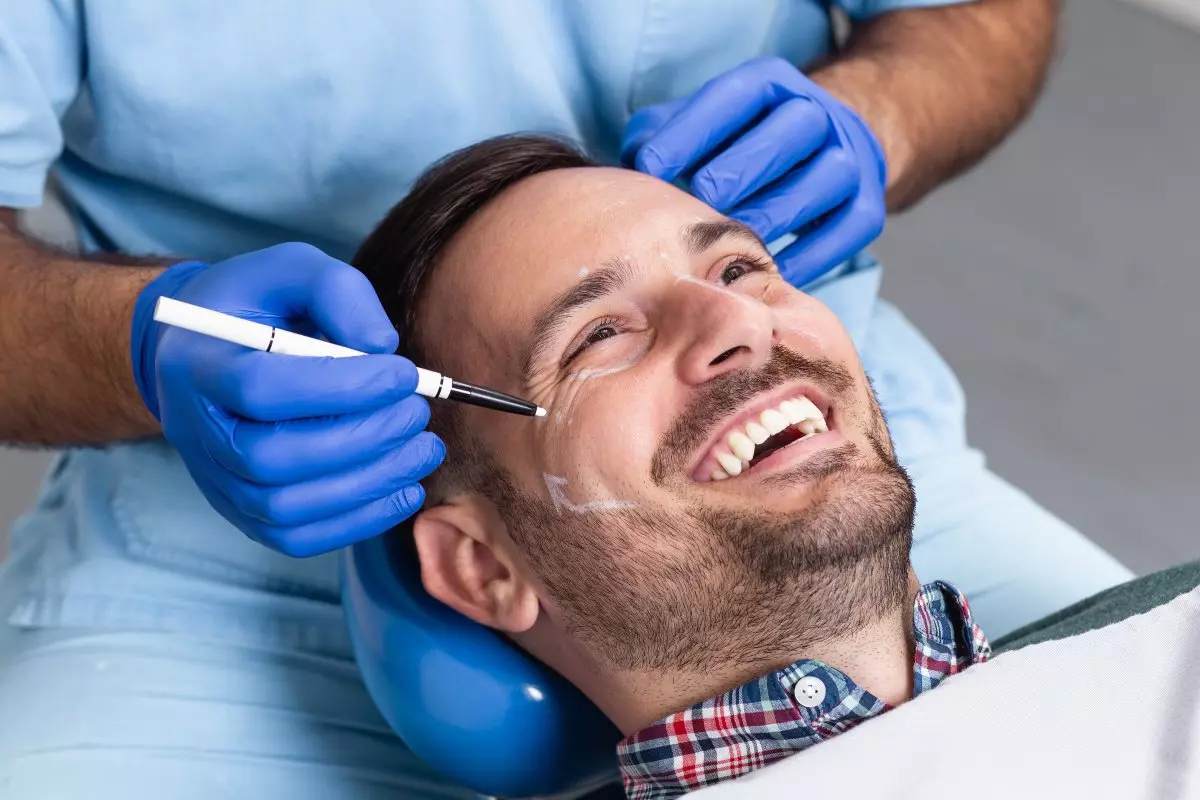The number of new plastic surgery methods keeps increasing every year, and so does the demand for these surgeries. In 2022, there was a significant global increase – more than 14.9 million surgical and 18.8 million non-surgical procedures were performed worldwide, reflecting an overall increase of 11.2% from the previous year.
If you run your own plastic surgery clinic, you need to stay up to date with what procedures are currently in demand. This can help you better tailor your marketing efforts and acquire all the necessary equipment. That said, we have collected a list of plastic surgery trends in 2024 that every surgeon has to know. Read on to find out more.
Body Contouring
Tummy tucks (abdominoplasty) are particularly gaining traction among moms undergoing a “mommy makeover.” This comprehensive procedure involves removing excess skin and fat from the abdominal area and tightening the abdominal muscles. It has become a sought-after solution for mothers looking to restore their pre-pregnancy body shape.

A mommy makeover typically combines various procedures tailored to address post-pregnancy body changes. These can include a breast lift, augmentation, or reduction to counteract the effects of breastfeeding and pregnancy. Liposuction is often included to target stubborn fat deposits that don’t respond to diet and exercise.
Advances in liposuction technologies now allow for more precise fat removal and contouring, particularly in areas like the abdomen, thighs, and neck. These modern techniques cater to patients seeking targeted body sculpting.
Other types of non-weight-related body contouring procedures are also expected to grow in popularity. For instance, one of the latest plastic surgery trends is the Qwo, the first FDA-approved injectable to prevent cellulite. Interest in this quick fix is already growing and is forecasted to increase in the coming years.
Cost analysis of running a surgical suite shows that cosmetic surgery has a 31.2% profit margin in California. This is the average indicator if you take into account standard costs for office rent, equipment, salaries, and industry average pricing for procedures.
Injections and Fillers
An injectable is a non-invasive beauty treatment that doesn’t usually require general anesthesia. Therefore, many people prefer injections and fillers to avoid undergoing anesthesia or extended recovery periods. The demand for different injections and fillers is growing substantially, mainly because patients can see the results in 24 to 48 hours.
While the demand for Botox and classic lip fillers remains stable, new injectable trends are emerging among patients. Some of the latest trends to keep an eye on include:
- Platelet-rich Fibrin (PRF): a new version of the platelet-rich plasma (PRP) injectable with a higher concentration of white blood cells that promote hair growth and rejuvenate the skin. This procedure can be offered “off-label” for musculoskeletal conditions, including muscle strains and soft tissue injuries. A typical PRF procedure costs between $300 and $700 in most clinics.
- Hyaluronic Acid Fillers: aimed to reduce fine lines and wrinkles and give structure and volume to the face and lips. The average cost of a syringe of Hyaluronic Acid filler is between $400 and $800.
- Neurotoxins: inner-muscle injections that lessen wrinkles and can also treat excessive sweating. New types of neurotoxins are under development. While these injections are typically safe, side effects in patients may occur, such as swelling, bruising, and pain.
Preventative Procedures
Previously, plastic surgery was primarily used to repair damage caused by physical damage. Then, older generations started using facelifts to look younger. Nowadays, younger generations also use cosmetic procedures to prevent and delay the signs of aging.

The following are the most common preventative plastic surgery trends performed by surgeons:
- Botox Injections: In 2024, the popularity of Botox is expanding to younger age groups, with treatments like ‘Botox lip flips’ and ‘baby Botox’ becoming increasingly sought after. These procedures offer subtle enhancements and preventative benefits, appealing to those in their late 20s and early 30s.
- Dermabrasion: Dermabrasion can be performed pretty quickly. The procedure involves scraping away the outermost layer of the skin until a scar or wrinkle is less or no longer visible.
- Mini Facelifts or ‘Light Lift’: Mini facelifts can prevent signs of aging. Surgeons pull the skin towards the patient’s ears after making incisions in front of the ears. Then, they remove excess skin to tighten its appearance. In addition, treatments like FaceTite are emerging as popular alternatives to traditional facelifts. Utilizing radiofrequency-assisted lipolysis, these procedures offer significant results with minimal downtime, catering to the needs of busy professionals.
- Preventative Mastectomy: Preventative procedures aren’t always for cosmetic purposes. Mastectomy involves entirely removing the breast through surgery to prevent the development of breast cancer.
- Eyelid and Brow Lifts: As an alternative to repeated Botox injections, eyelid lifts (blepharoplasty) and brow lifts are gaining popularity. These procedures address sagging or drooping eyelids and forehead skin, offering a more permanent solution to aging signs.
Revisionary Procedures
Another common trend is among patients who want to change the results of their previous treatments. Revisionary procedures are usually done for two reasons.
The first is to update the patient’s appearance. For instance, many patients return to the operating table for follow-up procedures on plastic surgery that they did years ago. This maintenance surgery can extend the results for them in the long run.
Other patients opt for revisionary procedures because they may have changed their minds or are not satisfied with the results. In any case, surgeons must perform a detailed analysis of the endoscopic exam, if necessary, to minimize the risk of a second failure.
Male Cosmetic Surgery
As plastic surgery is becoming less stigmatized, clinics observe men embracing the idea of plastic surgery more than ever before.

Some of the cosmetic procedures that men request most often include:
- Gynecomastia (reduction of the male breast tissue)
- Rhinoplasty (nose job)
- Chin augmentation
- Liposuction
- Eyelid rejuvenation
A New York-based plastic surgeon, Alan Matarasso, M.D., says that “more men are seeking plastic surgery to help them professionally as well as they feel more confident about advancing in their careers and competing in the workplace after surgery.”
Personalized and Multiple Surgeries
Most plastic and cosmetic surgeries are personalized to meet each patient’s needs and wants. However, one of the recent trends in plastic surgery offers an extra level of customization and a combination of different procedures. This allows patients to undergo multiple cosmetic surgeries in one go.
Many clinics now perform multiple surgeries at once to avoid having patients undergo anesthesia several times. And most of these combinations of surgeries do not extend the recovery time. For example, facelift patients can combine fat grafting, lasers, and a chemical peel simultaneously. Surgeons can now also perform a skin tightening treatment with liposuction or a breast lift with breast augmentation surgery.
The core theme in modern plastic surgery is customization. Surgeons are increasingly tailoring treatments to ensure that procedures are not just generic solutions but are specifically designed to match individual features.
For example, in breast augmentation, rather than applying a standard procedure for all, surgeons now consider factors like body proportion, lifestyle, and personal preferences. This ensures that the enhancements are in harmony with the patient’s overall physique and desired look.
Please note that multiple surgeries may also be riskier. That’s why it is important to disclose all associated risks and side effects to the patient before they give their consent.
Natural-Looking Aesthetic Enhancements
In 2024, the plastic surgery industry is witnessing a significant shift towards natural-looking results. This trend emphasizes subtlety and aims to enhance rather than completely alter a person’s appearance. The goal is to achieve a refreshed and authentic look, avoiding any overt signs of surgical intervention.
Patients today prefer treatments that highlight their natural features. This trend extends to various surgical and non-surgical procedures, including minimally invasive techniques that offer significant results with less downtime and recovery.
Plastic and Cosmetic Surgery Financing
Plastic and cosmetic surgeries usually cost more than $500 and can reach up to $50,000. However, some patients may not have the full amount on hand to pay for their procedures.

Instead, they may need financing. Surgeons can also help their patients by offering plastic surgery financing solutions for patients. For instance, patients can take advantage of split payments. This alternative financing option allows cosmetic clients to pay for their procedures in smaller monthly installments over a longer period of time.
Setting up a cloud-based POS financing platform is fast and easy. In case a patient is denied POS financing, the clinic can connect them with a personal loan provider instead.
Social Media Influence
There’s no point in denying that social media has recently impacted the uptick in plastic and cosmetic surgeries. Many users tend to compare themselves to celebrities and influencers on Instagram, which incentivizes them to make corrections to their bodies to resemble their favorite stars.
For instance, with the rise of personal branding and social media influence, there’s an increased focus on facial profiles. Chin augmentation, using fillers, fat grafts, or implants, is becoming popular for those looking to balance and enhance their facial structure.
Research published at the National Library of Medicine reveals that 95% of cosmetic surgery patients have consulted an online source, particularly social media. Additionally, more than half of the respondents follow a plastic surgeon on social media.
Today, Instagram, Twitter, and other networks are powerful tools for plastic surgeons to advertise their professional services and strengthen their brand positioning. For instance, surgeons can attract customers by posting before and after photos, informative infographics, and practitioner bios.
Sum Up
Plastic surgery is growing in popularity and expanding into new demographics. In this article, we saw what the trends in plastic surgery will be in 2024 and what types of surgeries every surgeon can expect to perform more frequently. With the combination of social media’s influence and various available financing options, plastic surgeons are confident that they’ll continue seeing a steady rise in the number of cosmetic and plastic surgery patients.


